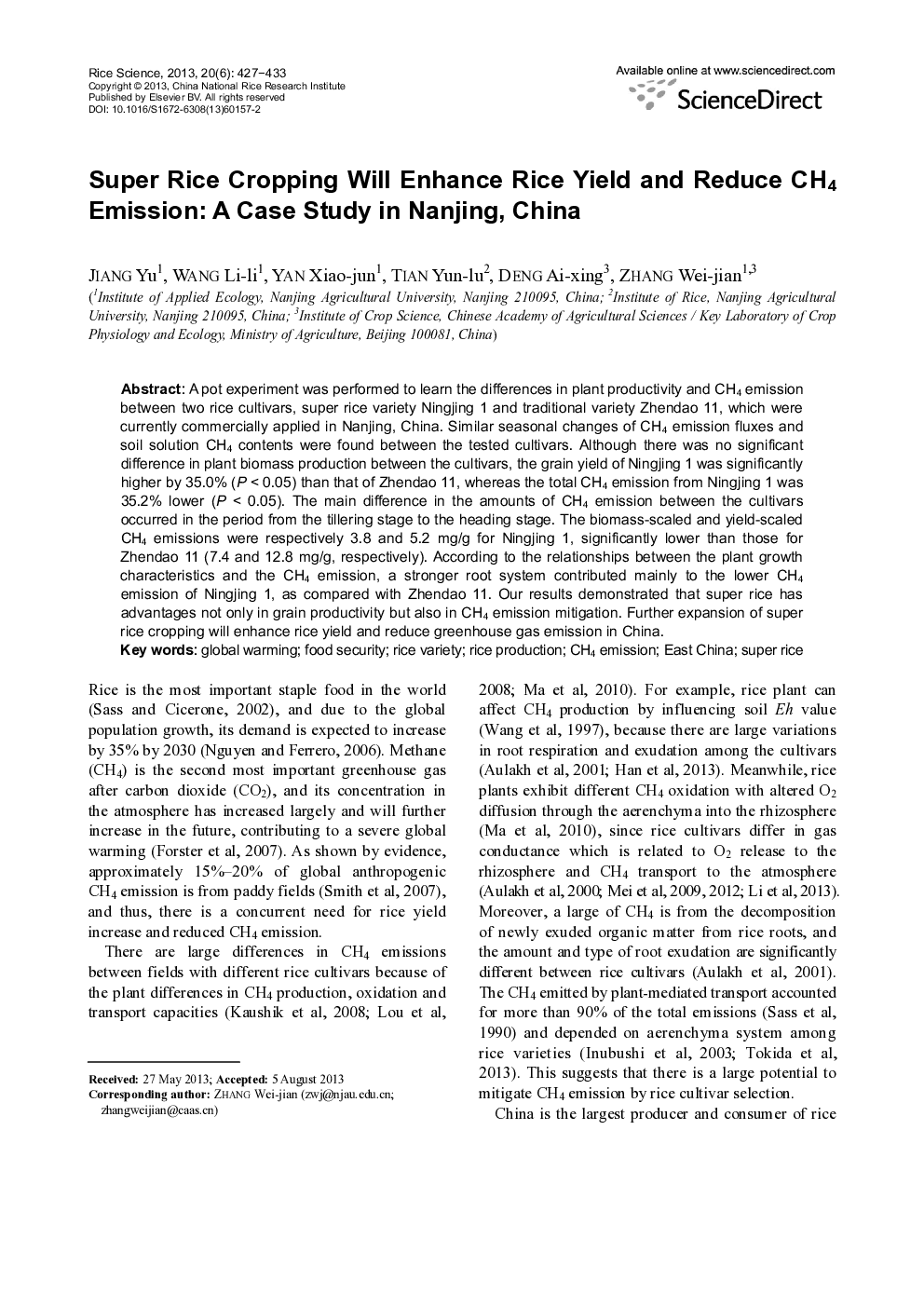| Article ID | Journal | Published Year | Pages | File Type |
|---|---|---|---|---|
| 4501812 | Rice Science | 2013 | 7 Pages |
A pot experiment was performed to learn the differences in plant productivity and CH4 emission between two rice cultivars, super rice variety Ningjing 1 and traditional variety Zhendao 11, which were currently commercially applied in Nanjing, China. Similar seasonal changes of CH4 emission fluxes and soil solution CH4 contents were found between the tested cultivars. Although there was no significant difference in plant biomass production between the cultivars, the grain yield of Ningjing 1 was significantly higher by 35.0% (P < 0.05) than that of Zhendao 11, whereas the total CH4 emission from Ningjing 1 was 35.2% lower (P < 0.05). The main difference in the amounts of CH4 emission between the cultivars occurred in the period from the tillering stage to the heading stage. The biomass-scaled and yield-scaled CH4 emissions were respectively 3.8 and 5.2 mg/g for Ningjing 1, significantly lower than those for Zhendao 11 (7.4 and 12.8 mg/g, respectively). According to the relationships between the plant growth characteristics and the CH4 emission, a stronger root system contributed mainly to the lower CH4 emission of Ningjing 1, as compared with Zhendao 11. Our results demonstrated that super rice has advantages not only in grain productivity but also in CH4 emission mitigation. Further expansion of super rice cropping will enhance rice yield and reduce greenhouse gas emission in China.
